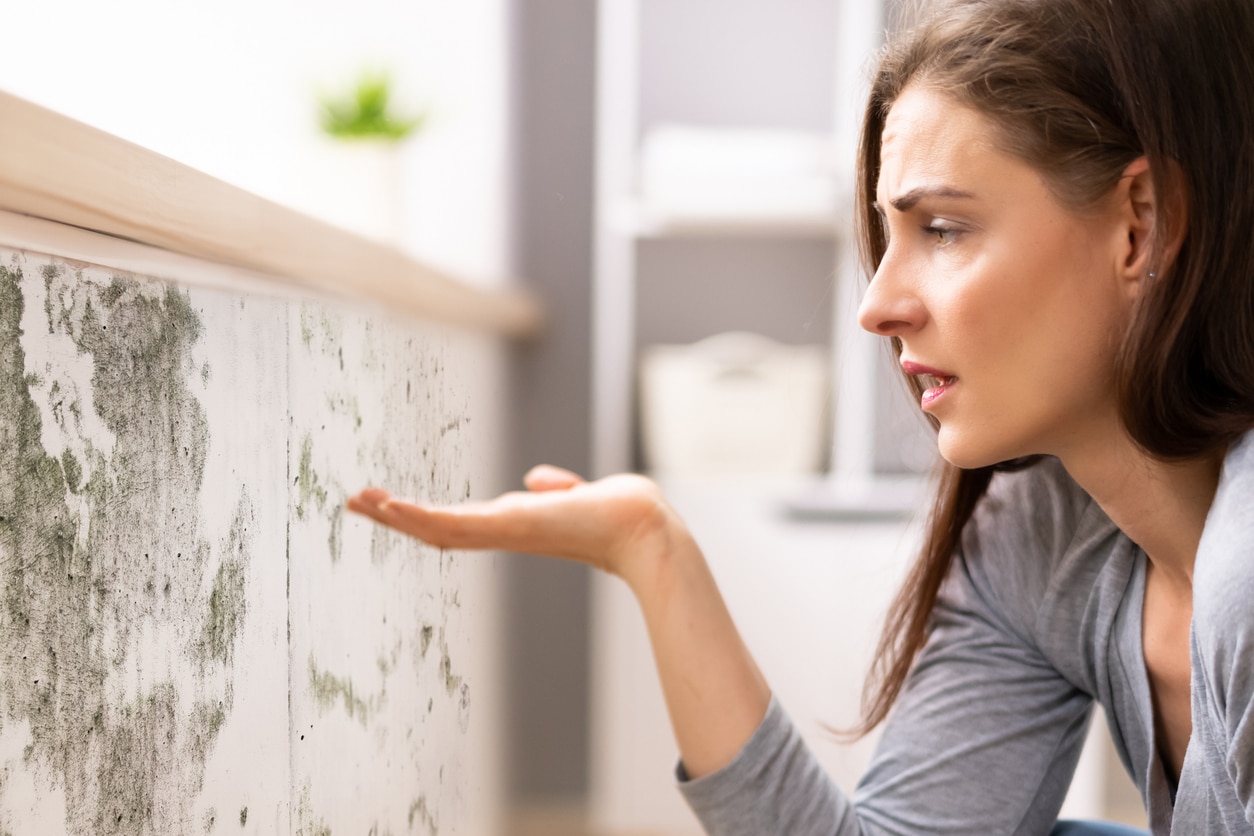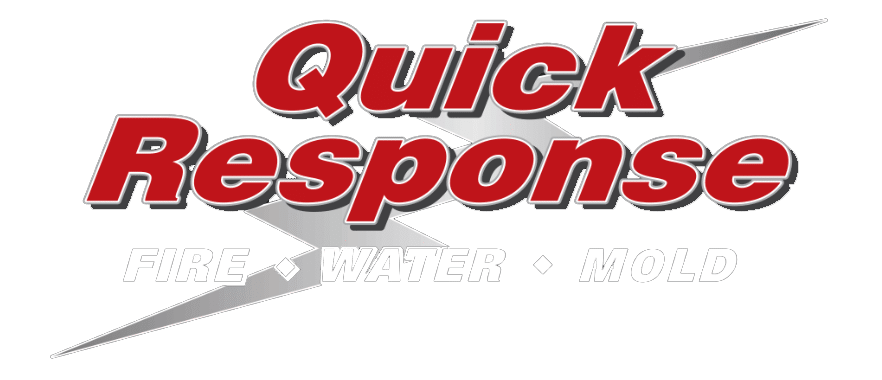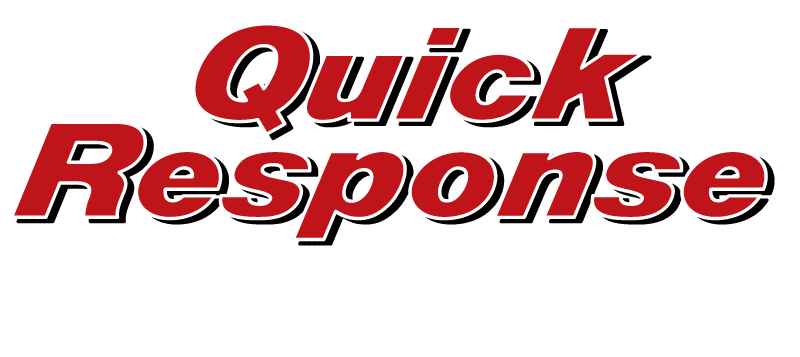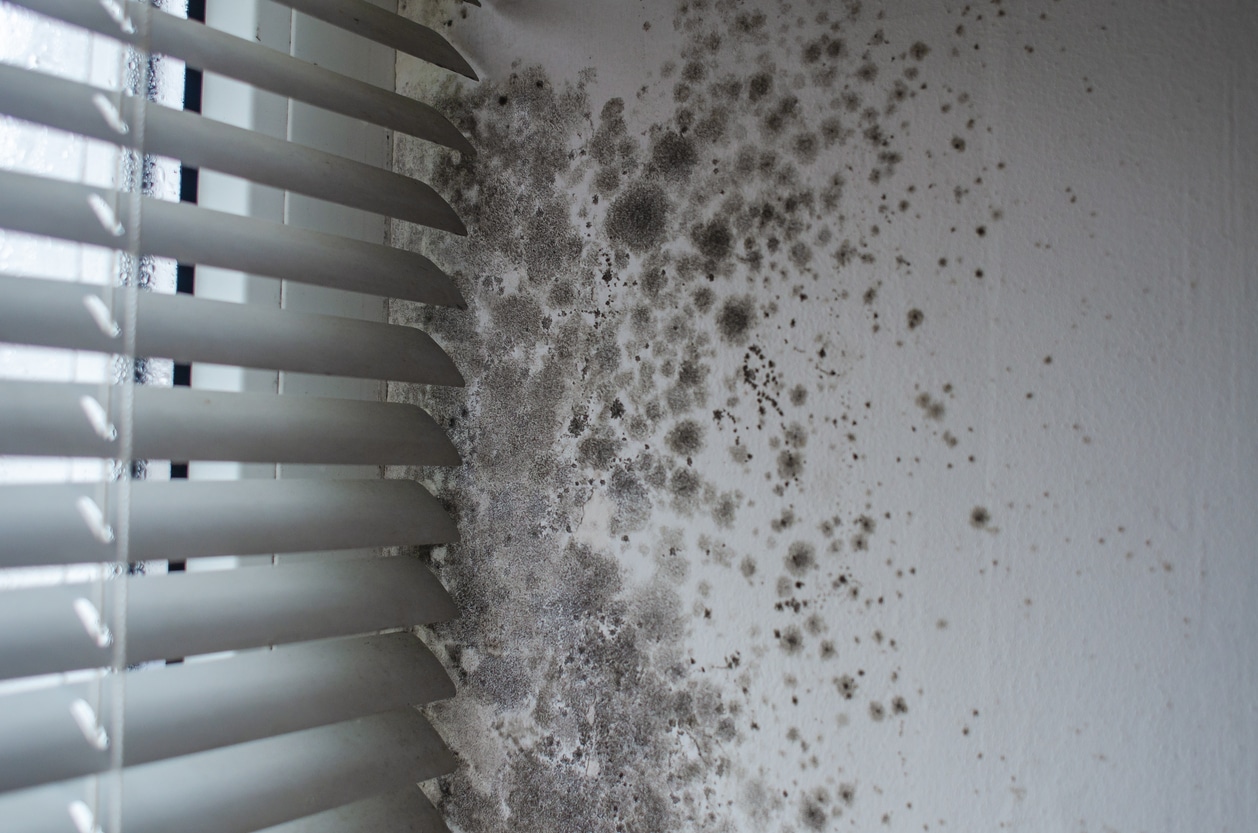It's easy to hope those black spots on your walls or ceilings are just dust…

Trust Your Nose – Detecting Mold in Your Home or Business
Mold is a common problem in both residential and commercial properties. It can cause significant damage to buildings and pose serious health risks to occupants. As a property owner or manager, you need to be able to identify the signs of mold growth and take appropriate action to address the issue.
This month, Quick Response Restoration will talk about common mold species, where it’s most likely to occur, and how it can look and smell. You’ll be able to recognize even the most subtle signs that you have a dangerous mold problem.
What Causes Mold Growth?
Mold thrives in damp, humid environments and can grow on a variety of materials, including wood, paper, fabric, and even concrete. Some common causes of mold growth include:
- Water Leaks: Leaks in plumbing, roofs, or walls can create the perfect conditions for mold to flourish.
- High Humidity: Inadequate ventilation, poor insulation, or faulty dehumidifiers can lead to high indoor humidity levels, which can promote mold growth.
- Flooding: Any type of water damage, whether from a natural disaster or a plumbing issue, can result in mold growth if not properly addressed.
- Condensation: Excess moisture in the air can lead to condensation on surfaces, creating an environment conducive to mold.
When you understand the underlying causes of mold growth, you can implement an effective prevention and remediation strategy.
Signs of Mold in Your Home or Business
A mold infestation often gives itself away with a few common signals. Look for the following signs:
- Visual Cues: Discoloration on walls, ceilings, or floors; fuzzy or slimy growth; musty odors; and water stains or moisture damage.
- Respiratory Issues: If you or your employees/tenants are experiencing persistent sneezing, coughing, eye irritation, or breathing difficulties, it could be a sign of mold exposure.
- Musty Odors: A strong, unpleasant musty smell indicates mold may be present, even if you can’t see it.
- Visible Water Damage: Leaks, flooding, or high humidity can create the perfect mold environment.
If you notice any of these signs, you should take action to identify and address the mold problem as soon as possible.
Identifying Common Mold Species
Mold can come in a variety of colors, textures, and species, each with its own unique characteristics. Some of the most common types of mold found in homes and businesses include:
- Aspergillus: A powdery, green, or black mold that can cause respiratory issues.
- Cladosporium: A green or black mold that often appears on the back of toilets, shower curtains, and other damp surfaces.
- Penicillium: A blue or green mold that can grow on food, wood, and other organic materials.
- Stachybotrys: Also known as “black mold,” this slimy, greenish-black mold is particularly toxic and can cause severe health problems. This mold often appears on walls or other wooden structures.
Understanding the different types of mold can help you better identify the problem and determine the appropriate course of action.
Hiring a Professional Mold Inspector
If you have mold in your building, we recommend having it professionally removed to ensure the safety of your property and its occupants. A professional will provide a comprehensive evaluation of the problem and a safe and effective remediation plan. They will find the underlying causes and use specialized knowledge and tools to keep the mold from coming back. By relying on experts, you can be sure that you and anyone in your building remain safe from health risks caused by mold.
The Professional Mold Remediation Process
The mold remediation process typically involves the following steps:
- Containment: The affected area is isolated and sealed off to prevent the spread of mold spores during the remediation process.
- Removal: Mold-infested materials, such as drywall, insulation, or carpeting, are carefully removed and disposed of according to local regulations.
- Cleaning and Disinfection: All surfaces in the affected area are thoroughly cleaned and disinfected using specialized mold-killing solutions.
- Drying and Dehumidification: To prevent future mold growth, any remaining moisture is addressed by using dehumidifiers, fans, or other drying equipment.
- Verification and Clearance: After the remediation is complete, the inspector will conduct a final assessment to ensure that the mold problem has been effectively resolved.
Mold remediation should only be performed by trained and certified professionals to ensure the process’s safety and the mold problem’s long-term resolution. If you need experts who go the extra mile, look no further than us at Quick Response Restoration! We’ll take care of any contamination, no matter how severe.
When you find mold, don’t stress- just call Quick Response!
Expert Mold Remediation Services From Quick Response Restoration in Saratoga County, NY
Experience peace of mind with Quick Response Restoration’s expert mold remediation services in Saratoga County. Our certified professionals swiftly and effectively address mold issues, prioritizing the safety of your property and loved ones. Don’t let mold compromise your living space any longer.
Contact us today to schedule expert mold remediation services by visiting our website or calling 518-899-7090.




